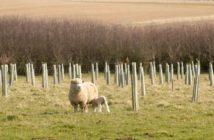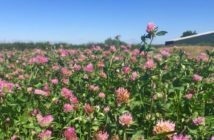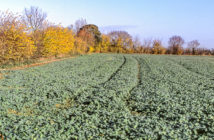A few years ago, it seemed that IPM strategies had solved mite problems in orchards but now a combination of climate change and restriction of acaricides has seen them return to become a serious problem once again.
A run of hot summers and mild winters in the South East has encouraged populations of fruit tree red spider mite to build up. Also, two-spotted spider mite, a new pest to many apple growers, is now being found in orchards.
Mild winters have also brought forward the hatching of red spider mite eggs by almost a month to mid-March. In the first year of attack economic damage may be avoided but trees will have been weakened so they enter the second year with depleted reserves leading to poor flower initiation. Yield losses of 20 to 30 percent are possible.
At the same time IPM strategies have been disrupted by the necessity to use less IPM friendly products to control woolly aphid in apples and pears and spotted wing drosophila (SWD) in neighbouring tunnel-covered cherry and soft fruit crops. As a result, many orchards have seen a fall in predator numbers.
To compound matters, growers are now down to just three control options for red spider mite and their harvest intervals have all been extended. For two-spotted mite control there are even fewer options.
Preferring much higher temperatures two-spotted mite is being found increasingly in top fruit in the South East, particularly in cherries under rain covers and tunnels. Their eggs overwinter and hatch in April to May. Adult feeding reduces photosynthetic area and damage is much worse where Typhs are scarce.
This spring Certis is introducing two new acaricides – Nissorun (hexythiazox) and Kanemite (acequinocyl) – which bring new hope of getting mites back under control. Certis IPM manager Semo Kurtev says: “Both are target specific treatments that are safe to natural predators and will facilitate IPM strategies.”
Nissorun is authorised for use as an acaricide for control of two-spotted spider mite (Tetranychus urticae) in hops, pome fruit and fruiting vegetables and Mr Kurtev says it also has activity against tree fruit red spider mite.
Experience in French apple orchards suggests that if there is high pest pressure it should be applied between mouse ear and green cluster. Semo says that if used early like this Nissorun can provide season long protection.
Kanemite is authorised for use as an acaricide for control of two-spotted spider mite and fruit tree red spider mite (Panonychus ulmi) in pome fruit and stone fruit. As for Nissorun only one treatment per year is permitted.
Active on all stages of pest mites including eggs it is considered a key acaricide in Spain and France. Semo says it is the ideal product to follow Nissorun if the mite population bounces back later in the season. “With rapid knockdown and a new IRAC mode of action 20B it is complimentary to Nissorun and will aid resistance management.”




